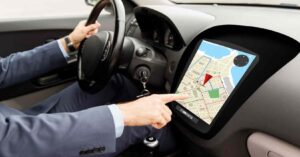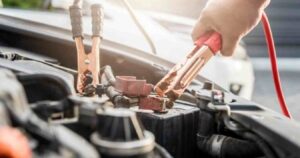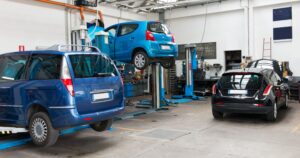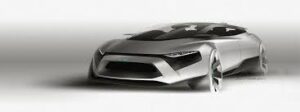When it comes to automobile safety, we often come across the acronym SRS. But what does it actually stand for, and why is it so important? In this article, we’ll dive deep into the world of automotive safety to understand what SRS means and how it plays a crucial role in protecting drivers and passengers alike. So fasten your seatbelts, and let’s embark on this informative journey!
Table of Contents
ToggleSRS: Unveiling the Acronym
SRS stands for “Supplemental Restraint System.” It is an integral part of a vehicle’s safety features, designed to provide an additional layer of protection in the event of a collision. While the term SRS is widely used, you might be more familiar with its common name – the airbag system.
The Airbag: A Lifesaver Within
Imagine yourself cruising down the highway, enjoying the open road, when suddenly, a collision occurs. In that split second, the airbag system springs into action, deploying airbags to cushion and protect you from the impact. These airbags are strategically placed throughout the vehicle, ensuring that occupants are shielded from potential injuries.
How Does the SRS Work?
The SRS is an intricate network of sensors, control units, and airbags working in perfect harmony. The system continuously monitors various parameters to determine the need for airbag deployment. When the sensors detect a sudden deceleration or impact, they send signals to the control unit, which then triggers the deployment of the airbags.
The deployment process occurs at an astonishing speed, taking only milliseconds. The airbags are filled with gas in an instant, creating a cushioning effect that absorbs the force of the impact. This rapid response helps reduce the risk of severe injuries, particularly to the head, chest, and upper body areas.
Types of Airbags
While the term “airbag” may conjure up an image of a single device, the SRS actually consists of several types of airbags, each serving a specific purpose. Let’s explore some of the most common ones:
- Driver-side airbag: Located in the steering wheel hub, this airbag is designed to protect the driver’s head and upper body in a frontal collision.
- Passenger-side airbag: Positioned on the dashboard in front of the front passenger seat, this airbag offers protection similar to the driver-side airbag.
- Side airbags: These airbags are typically integrated into the sides of the seats or the door panels. They provide additional protection for occupants during a side impact.
- Curtain airbags: Also known as side curtain airbags, these airbags are deployed from above the windows. They are designed to protect occupants’ heads in the event of a rollover or side collision.
- Knee airbags: Located below the dashboard, knee airbags aim to reduce injuries to the lower limbs and prevent occupants from sliding under the dashboard during a crash.
The Evolution of SRS
The concept of the airbag system dates back several decades, but its widespread adoption in vehicles is a relatively recent phenomenon. Over the years, advancements in technology and increased understanding of crash dynamics have led to significant improvements in SRS design and functionality.
Early airbag systems primarily focused on frontal impacts. However, with ongoing research and development, manufacturers now incorporate various types of airbags to cover different collision scenarios. This evolution has contributed to enhanced occupant safety and has been a significant factor in reducing the severity of injuries in accidents.
The Importance of SRS in Car Safety
The SRS, or airbag system, plays a pivotal role in enhancing overall vehicle safety. It serves as a critical component alongside seat belts, crumple zones, and other safety features. The combination of these elements creates a comprehensive safety net that significantly reduces the risk of severe injuries in collisions.
It’s important to note that the SRS is not a standalone solution. It works in conjunction with other safety features to maximize protection. For instance, seat belts are designed to keep occupants restrained during a collision, allowing the airbags to function optimally. Together, these safety measures create a multi-layered defense system, safeguarding occupants in a wide range of accident scenarios.
Maintaining and Servicing the SRS
Like any other automotive system, the SRS requires regular maintenance and periodic inspections to ensure its proper functioning. It is crucial to follow the manufacturer’s recommended maintenance schedule and address any warning lights or system malfunctions promptly.
Additionally, it’s essential to exercise caution when performing DIY repairs or modifications on a vehicle equipped with an SRS. Working on the airbag system without proper knowledge and equipment can be dangerous and may result in unintentional airbag deployment or other system malfunctions.
Conclusion
The Supplemental Restraint System, commonly referred to as SRS, is a vital aspect of modern vehicle safety. The deployment of airbags in the event of a collision helps minimize the risk of severe injuries, protecting drivers and passengers alike. The continuous evolution of the SRS showcases the commitment of the automotive industry to enhance safety standards and create safer vehicles.
As we embrace the advancements in automotive technology, it is essential to recognize the crucial role the SRS plays in keeping us safe on the roads. So the next time you buckle up and start your journey, remember that the SRS is there, silently waiting to spring into action, should the need arise. Drive safe, and may the SRS be your trusted ally on every road trip!
Note: While the SRS significantly reduces the risk of injuries, it is essential to remember that it cannot entirely eliminate the possibility of injuries or guarantee safety in all scenarios. Defensive driving, adhering to traffic regulations, and maintaining a well-maintained vehicle remain essential for overall road safety.
























